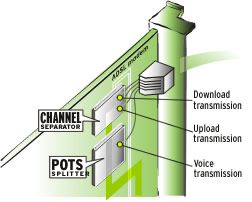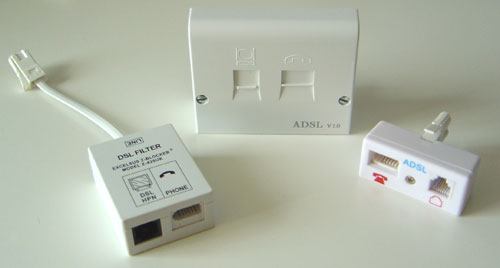Adsl Guide
How ADSL works?
Asymmetric digital subscriber line moves Internet data more quickly downstream than it does upstream. ADSL achieves download speeds of up to 9Mbps and upload speeds of up to 1.5Mbps over regular analog phone lines. It does this by taking advantage of unused frequencies on existing phone lines, which means you can still use the same line for telephone calls.
HOW IT WORKS AT YOUR END
A. Inside Your PC: Your computer's ADSL modem connects to a standard analog phone line.
B. Voice and Data: A DSL modem has a chip called a POTS splitter, which divides the existing phone line into two bands: one for voice and one for data. Voice travels on the first 4kHz of frequency. The higher frequencies--up to 2MHz depending on line conditions and wire thickness--are used for data.
C. Split Again: Another chip in the modem, called a channel separator, divides the data channel into two parts: a larger one for downstream Internet data and a smaller one for upstream Internet data.


HOW IT WORKS AT YOUR PHONE COMPANY
A. Over the Wire: At the other end of the phone line--18,000 feet away at most--is another ADSL modem, located at the phone company's central office. This modem also has a POTS splitter, which separates the voice calls from the data.
B. Telephone Calls: Voice calls are routed to the phone company's public switched telephone network (PSTN) and proceed on their way as usual.
C. Internet Requests: Data coming from your PC passes from the ADSL modem to the digital subscriber line access multiplexer (DSLAM). The DSLAM links many ADSL lines to a single high-speed asynchronous transfer mode (ATM) line, which in turn connects to the Internet at speeds up to 1Gbps.
D. Back at You: The data you request is retrieved from the Internet and routed back through the DSLAM and ADSL modem at the phone company's central office before coming back to your PC.
